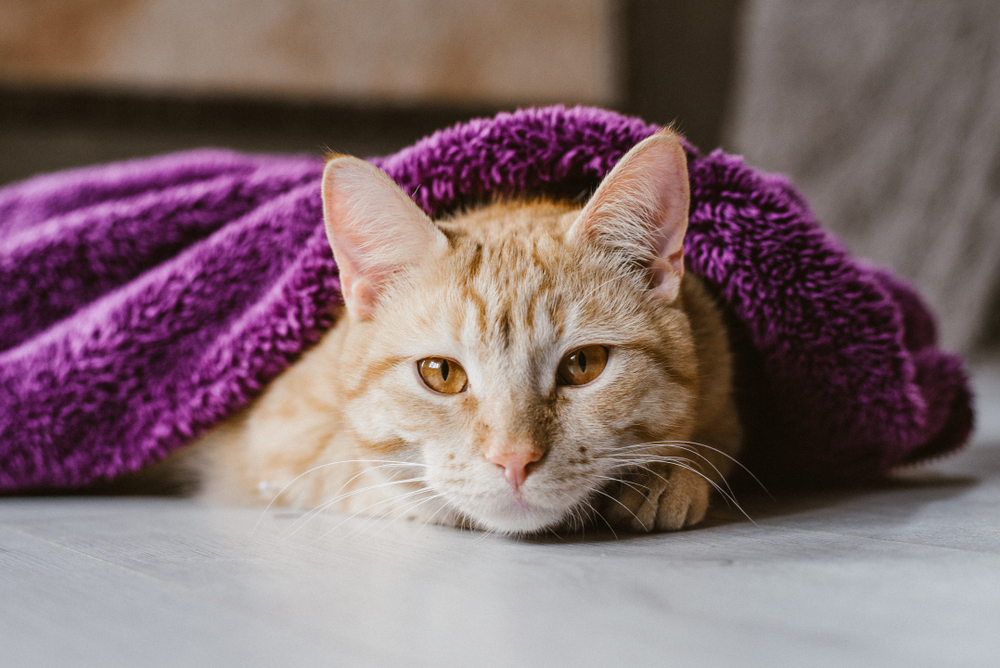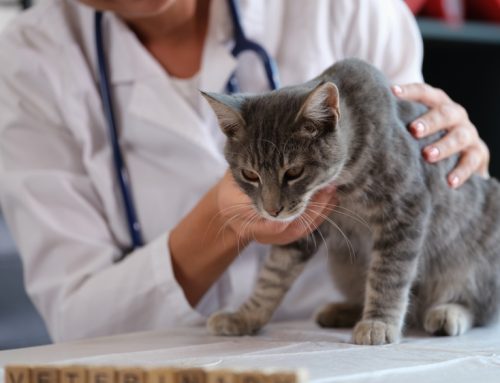When you are stressed, you may rely on trusted coping mechanisms, such as meditation, and retreat to your safe haven. Like you, your pet can also experience stress and anxiety, and it’s essential to create a safe and calming environment for them at home. Our Chiefland Animal Hospital team wants your pet to enjoy a stress-free life, so we are sharing tips you can use at home to help alleviate your pet’s stress and promote their overall well-being.
#1: Use calming products to ease your pet’s stress
Calming products can be particularly effective in reducing your pet’s stress in various situations, such as during thunderstorms or when introducing your pet to a new environment or visitors. Some of the most common calming products include:
- Pheromone products — Pheromones are natural chemicals that animals use to communicate with each other. Various products that use synthetic pheromones, such as diffusers and sprays, are available and can help create a sense of security and calm for your pet. Adaptil for dogs and Feliway for cats are trusted products that we recommend.
- Calming supplements — We can recommend a calming supplement formulated to reduce anxiety. These supplements often contain ingredients like L-theanine, chamomile, or melatonin, which have calming properties.
- Anxiety wraps — These specially designed garments apply gentle, constant pressure to your pet’s body, similar to a comforting hug. Many pets find this pressure soothing during stressful situations, such as during thunderstorms or when meeting houseguests.
- Anti-anxiety medications — We can prescribe anti-anxiety medications for pets with severe anxiety or phobias.
While calming products can be beneficial, they are most effective when used in conjunction with behavioral techniques and a supportive home environment.
#2: Desensitize your pet to stressful situations
Desensitization involves gradually exposing your pet to stimuli that may trigger anxiety or fear in a controlled and positive way. For example, if your pet becomes anxious when you run the vacuum, get the vacuum out, but don’t plug it in. Reward your pet for being in the same room as the vacuum cleaner or sniffing it. Leave the vacuum out so that it becomes a normal part of your pet’s environment.
Next, play a recording of the vacuum at a low volume while playing with your pet or giving them treats. Over time, gradually increase the volume while ensuring your pet remains relaxed. This technique helps change your pet’s emotional response to the trigger, making them less anxious.
#3: Teach your pet to love their crate or carrier
Your pet’s carrier should be a safe haven that can be used to transport them safely or a place they can retreat when feeling stressed. Unfortunately, carriers often become a source of anxiety, especially when they are used only for stressful situations, such as vet visits. Instead, help your pet form a positive association with their carrier by leaving it out in your home with cozy bedding, treats, and toys. Encourage your pet to explore and relax in the carrier on their own. Reward them for entering the carrier, and gradually work up to closing the door for short periods, and then taking them for car rides in the carrier.
#4: Create a safe space for your pet
Just as you might retreat to your bedroom or the den when you feel stressed, your pet needs a safe space where they can decompress and relax. Designate a quiet, out-of-the-way area in your home where your pet can escape when they need a break from stimulation. Outfit this space with your pet’s favorite toys, a cozy bed, and soothing background music. Let your family members and guests know that your pet’s safe space is off-limits when they sneak away for alone time.
#5: Use positive reinforcement for unpleasant tasks
Positive reinforcement is a powerful tool for reducing stress and building trust, and is much more effective in the long term than forcing your pet to participate. Reward your pet with treats, praise, and affection when they exhibit calm and confident behavior, especially in situations that usually trigger anxiety. For example, if your pet resists having their nails trimmed, help them form a more positive association with the experience. Start by rewarding your pet for allowing you to simply touch their feet or curiously sniffing the nail trimmers. Gradually work up to trimming one or two nails at a time. Slowly progressing through these steps, and stopping when your pet shows signs of anxiety, will help them learn the procedure is not so scary, and will make the experience go more smoothly for both of you.
#6: Learn how to use a towel wrap to trim your cat’s nails

Despite positive reinforcement, your cat may still become anxious when you trim their nails. Using a towel wrap technique can help calm your cat and make them more cooperative. Start by gently placing your cat on a soft surface, such as a towel or a comfortable lap. Cover your cat’s body with a lightweight towel, leaving only their head exposed. Tuck each end of the towel securely under your cat, ensuring it’s not too tight and your cat can breathe comfortably. Gently expose one leg at a time for nail trimming. Gently extend the paw and use a pair of cat-specific nail clippers to trim the tips of their claws. Be cautious not to cut too close to the quick, which can cause bleeding and discomfort.
Offering your cat a lickable treat such as canned food can help distract them. If your cat becomes anxious or struggles, take breaks as needed, and don’t force them to do more in one sitting than they are comfortable with.
Creating a stress-free haven for your pet at home involves patience, positive reinforcement, and a commitment to their well-being. At Chiefland Animal Hospital, we take your pet’s mental health seriously and use low-stress techniques during each visit. Call us to schedule a low-stress visit or nail trim for your pet.








Leave A Comment